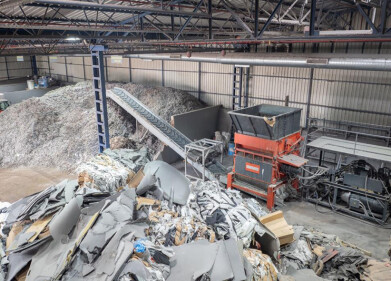Hazardous waste
Are Energy Efficient Bulbs to Blame for Increased Light Pollution?
Dec 10 2017
Over recent years, developed countries around the world have made a conscientious effort to switch over to LEDs and other energy-efficient light bulbs, in an attempt to save energy and reduce light pollution. Despite this, a recent study conducted by a German research centre has found that the surface area of the Earth illuminated by artificial light is still on the increase.
Why are we still seeing an upsurge in light pollution, even with the widespread adoption of energy-efficient bulbs? Are the bulbs themselves to blame? Or is there a more human explanation to the problem?
Shining a light onto light pollution
The German study (published in the journal Science Advances) used a new technique of Visible Infrared Radiometer Suite Day-Night Band (VIRUS) to obtain more accurate and precise data about light pollution than ever before.
The scientists on the team found that between 2012 and 2016, the amount of Earth’s surface lit by artificial sources had crept up by 2.2% each year. That hike came about despite the fact that the analysis period coincides almost perfectly with the time at which developed countries such as the USA, the UK and Germany have moved away from filament and plasma bulbs to LEDs.
While the USA showed a stagnation in the amount of light emitted, both the UK and Germany saw their radiance increase. Indeed, the only parts of the world to show significant improvement were war-torn countries like Syria and Yemen, where night lighting is avoided for safety reasons.
The “rebound effect”
Of course, holding the LEDs responsible for the hike in light pollution would be akin to putting a pistol on trial for murder or blaming a box of matches for a forest fire. Since LEDs are significantly more efficient than previous methods of artificial light, the only possible explanation for the increase in radiance is that humans are simply using them more.
“Well-designed LED lamps allow a two-third or more decrease of light emission without any noticeable effect for human perception,” explained Christopher Kyba, lead author on the project. “There is a potential for this lighting revolution to save energy and reduce light pollution – but only if we don’t spend the savings on new light.”
This phenomenon of reinvesting the savings wrought by energy-efficient bulbs into more lights has been dubbed the “rebound effect”, and scientists are hoping that now it has been pinpointed, we can take steps towards reversing it.
Humans not the only ones affected
Quite aside from the human consequences of light pollution (reduced visibility of stars and planets, increased incidence of headaches, stress, fatigue and anxiety, disrupted sleeping patterns), there are plenty of others on the planet who also suffer from our profligate use of light.
Animals and plant life already suffer from manmade noise pollution and often have to deal with the grave consequences of toxic waste as a result of human activities, but light pollution can further complicate matters. Many birds and other migratory species have their calendars thrown off course by the lightening skies, while plants which depend on cross-pollination to survive are similarly jeopardised.
Simply put, LED bulbs don’t cause light pollution, people do – but we won’t be the only ones paying the price.
Events
Aug 24 2025 Stockholm, Sweden and online
Aug 27 2025 Busan, South Korea
Sep 02 2025 Mexico City, Mexico
Sep 02 2025 Mexico City, Mexico
Sep 09 2025 Moscow, Russia





-from-Landia-are-on-their-way-to-Estonia.jpg)







